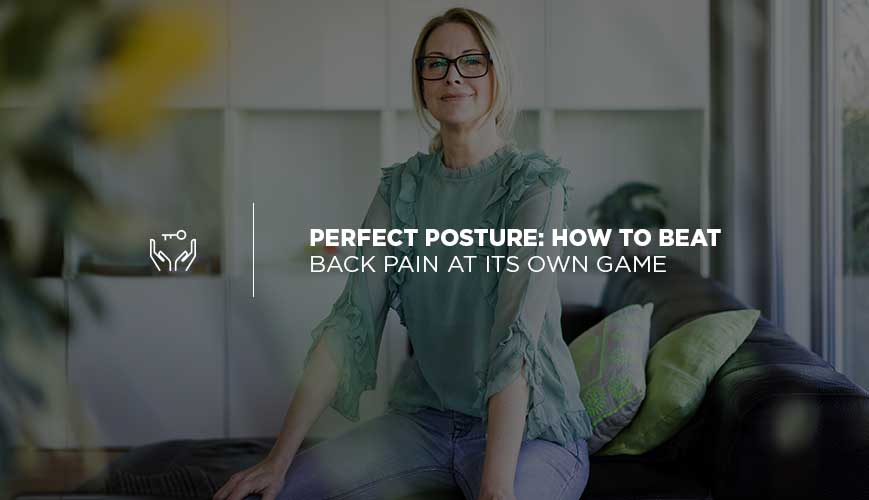Perfect Posture: How to Beat Back Pain at Its Own Game
By Sara Butler

The chiropractors at The Joint Chiropractic treat a lot more than back pain, but many patients initially see a chiropractor for only that -- back pain. According to the American Chiropractic Association, at any given time about 31 million Americans suffer from back pain. Chances are that you will experience back pain at some point in your own life.
One major difference a chiropractor can make in your back pain story is to help you understand the root cause of your “discomfort.” For many people, the root cause may be something they do each day but may not suspect at all: their posture.
Here’s what you need to know about the ways posture can impact your life, reduce your back pain, and how the chiropractors at The Joint Chiropractic can help.
Why Good Posture is Important
Good posture has an impact on how you look and also how you feel. Of course, there are benefits to good posture that you may not be able to see clearly, such as:
- Reduced stress and strain on ligaments and joints
- Correct alignment of joints and bones
- Increased energy
- Reduced chance of back pain and injury
- Improved mood
- Better digestion
- Reduced wear on the joints and muscles
Do You Have Good or Bad Posture?
When you have bad posture while performing everyday activities, then it can trigger back pain. Some of the most common ways people practice bad posture every day include:
- Hunching or slumping over when sitting at your desk or even on your couch
- Slouching as you walk or stand
- Lying on your stomach in bed while working or watching television
- Standing with most of your body’s weight on one leg
- Improperly lifting objects
Do any of these bad posture habits sound familiar? If so, then chances are good that you’ll experience back pain at some point in your life. If you lead a sedentary lifestyle and don’t exercise, then your chances of back pain also increase.
Poor Posture: How It Causes Back Pain
How does poor posture influence back pain? When you practice imperfect posture, stress is placed on many areas of the body, including joints, discs, and the muscles of your back. The stress can be removed once posture is corrected; if posture isn’t corrected, then the stress will only continue to grow and weaken the impacted areas.
For example, when you spend a lot of time hunched over your computer at your desk, then the muscles in your abdominal core and back can become painful and strained. This can reduce their blood supply and increase weakness and stiffness in affected areas of the body.
Another example is incorrect lifting. This can cause very serious issues, such as bulging or herniated spinal discs, as a result of the pressure placed on the discs in the back when lifting incorrectly. Once a bulge or herniation occurs, it can press on nearby spinal nerves and lead to referred pain down your extremities. The sage advice “lift with your legs, not with your back” was likely coined when the first caveman wrenched his spine lifting a rock, and it no doubt came from a cavewoman; there’s a reason it’s been around so long..
How the Chiropractor Can Help
When you see the chiropractors at The Joint, they do a head-to-toe evaluation. They will be on the lookout for any postural imbalances as well as joint restrictions that may be present and causing pain. Chiropractors can then help you to understand how your posture is causing the issue and show you how to correct it with stretches and exercise.
Chiropractors at The Joint also target and work to eliminate joint restrictions that may be adding to your discomfort. Once the full range of motion is returned to your joints, then you can work on being mindful of proper posture in your daily life and reduce back pain.
If you have questions or concerns about your posture, then contact the chiropractors at The Joint Chiropractic today!
The information, including but not limited to, text, graphics, images and other material contained on this page are for informational purposes only. The purpose of this post is to promote broad consumer understanding and knowledge of various health topics, including but not limited to the benefits of chiropractic care, exercise and nutrition. It is not intended to provide or be a substitute for professional medical advice, diagnosis or treatment. Always seek the advice of your chiropractor, physician or other qualified health care provider with any questions you may have regarding a medical condition or treatment and before undertaking a new health care regimen, and never disregard professional medical advice or delay in seeking it because of something you have read on this page.